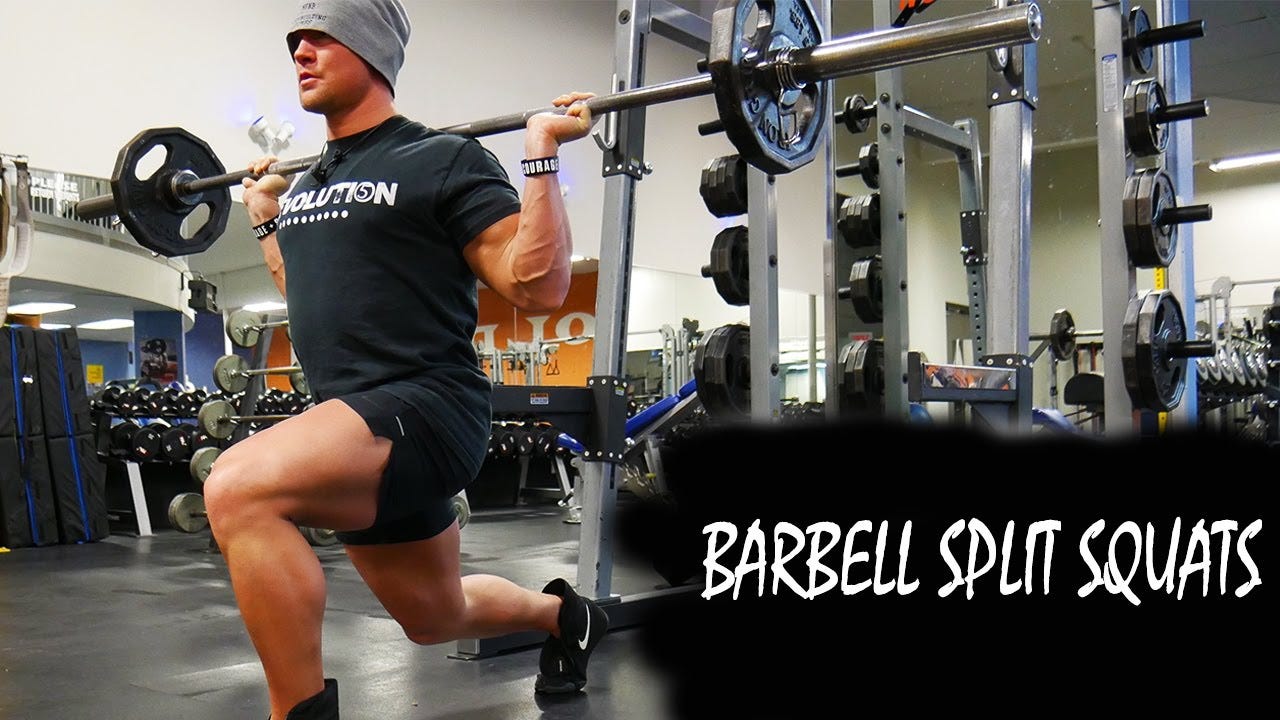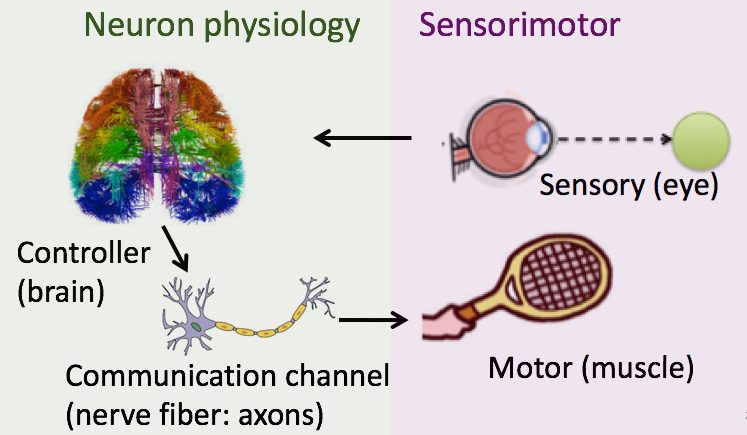
Janda noted a unique relationship between the skeletal system, muscular system, and the central nervous system (CNS); movement has a direct relationship to, and is a product of, interactions of the aforementioned systems (Page, Lardner, & Frank, 2010). Furthermore, distal joints and related movement patterns are inexorably affected by proximal joints and associated motor control.
Janda termed the relationship between the skeletal system, muscular system, and the CNS as chain reactions, postulating that there were local and global effects (i.e., chain reactions) of joints and muscles throughout the body (Page et al., 2010). As a means of exploring Janda’s chain reactions, I would like to present a client case demonstrating a loss of neutral spine during the split squat, and its relationship to the skeletal system, muscular system, and CNS.

My client “Sam” (i.e., pseudonym) had trouble performing a split squat with the barbell positioned behind her head, along her shoulders. Specifically, Sam had difficulty maintaining a neutral lumbar spine during the eccentric and concentric portions in the lower half of the split squat. Before training Sam, I performed a functional movement screen; she had a score of 3/3 (left and right) in her hips, 3/3 (left and right) in her shoulders, and scores of 2 in rotary stability (left and right) and pushup.
Additionally, Sam is 39 years old, training with me for 3 years, no medical issues, is an avid runner, in addition to eating well. Generally, I do not have Sam perform barbell split squats with a barbell (I use dumbbells). However, Sam is quite strong, and the barbell provided a means of increasing loads without the awkwardness of holding large dumbbells to her sides.

Janda stated, specifically, that the three systems for chain reactions were the articular, muscular, and neurological chains (Page et al., 2010). If we consider Sam’s spinal position during the lower half of the split squat (i.e., rounded back), we could first view the dysfunction through a structural postural chain (SPC) (i.e., sub-division of articular chain). The SPC suggests that the positioning of skeletal structures directly affects adjacent structures (Page et al., 2010).
For example, the posterior pelvic tilt Sam demonstrated on the bottom half of the split squat, causes a reactive rounding (i.e., kyphosis) of the thoracic spine, followed by a forward head posture and cervical extension of the neck. Sam’s dysfunctional spinal position can also be viewed upon by the functional postural chain (FPC) (i.e., sub-division of articular chain). The FPC states that tight and weak muscles can also negatively affect posture (i.e., the ability to maintain an upright spinal position).
For example, a posterior pelvic tilt causes a lengthening of the hip flexors and a shortening of the hamstrings, inducing thoracic kyphosis and lengthening of the thoracic muscles, followed by shortening of the cervical extensors (Page et al., 2010). If Sam demonstrates sub-optimal posture during the bottom phase of the split squat when she is not moving, motion will become worse during a dynamic portion (i.e., when she begins moving), deepening the faulty pattern during the closed kinetic chain motion.

Muscular chains (i.e., second system in Janda’s chain reactions) are also responsible for maintaining neutral spine during the split squat. Page et al. (2010) defined muscular chains as groups of muscles working in a synchronous fashion to produce movement. Synergistic muscle activation, a specific muscular chain, is paramount to maintain pelvic position during a split squat.
A synergist can be defined as a muscle working with another muscle to produce movement, or stabilization, about a joint (Page et al., 2010). During the split squat, the pelvis requires synergistic activation of both the posterior and anterior hip muscles to avoid posterior tilting, which could lead to a flexed lumbar spine. Thus, it is possible that Sam might have had timing problems with her synergists.

Neurological chains are the third and final component of Janda’s chain reactions (Page et al., 2010). A sub-component of the neurological chain is the sensorimotor system (SS). The SS could be viewed as the conduit through which individuals gather, process, and disseminate information, and movement, within the environment.
In essence, neurological chains are affected by afferent and efferent inputs, controlled through the CNS, and realized through the efferent pathways (Page et al., 2010). Central to the SS are reflexive stabilization chains. Reflexive stabilization chains occur, subconsciously, through the SS pathways as a means of providing stabilization globally, and locally.
Page et al. (2010) also noted that one of the most important SS chains is the pelvic floor chain (i.e., transverse abdominis, pelvic floor, diaphragm, and multifidus), as it provides trunk stability. Such information is relevant to my client’s split squat pattern, because if there is a SS deficit, such information may help explain why Sam loses lumbar control during the lower half of the exercise.

The barbell split squat is an exercise that is beneficial in providing knee dominant strength, with a unilateral focus. However, placement of the barbell behind the lower neck/top of the shoulders may not be the most ideal position; it is possible that such placement may facilitate the loss of a neutral spine. Placing the barbell along the clavicles with a crossed arm position (i.e., front split squat) can provide a unique opportunity for sensorimotor input; such a modification can elicit favourable changes in spinal position during the split squat.

Postural stability can be defined as the ability of the body to maintain an upright posture over its base of support (Page et al., 2010). During Sam’s conventional barbell split squat, the barbell may deepen the loss of a neutral spine, and thus, loss of postural stability. The front split squat is unique in that if the client does not maintain upright posture (i.e., postural stability) they fall forwards, and the barbell drops to the floor. In essence, the front squat incentivizes postural stability.
Additionally, the front squat accesses reflexes to maintain postural stability, known as reflex stabilization (Page et al., 2010). Reflex stabilization can be defined as subconscious reactions to maintain stability, locally or globally (Page et al., 2010). An example of reflex stabilization is the reaction to an anterior weight shift; the body reactively (i.e., subconsciously) activates the posterior chain musculature. Conversely, a posterior weight shift activates the anterior chain musculature to maintain postural stability.
Thus, one can see how placement of the barbell along the front shoulders induces an anterior weight shift, thereby causing reflex stabilization (activation of dorsal chain muscles) to maintain upright posture. In essence, the front barbell position feeds the mistake, encouraging an upright posture as a byproduct of reflex stabilization.
Dysfunctional movement can find its beginnings from many sources. Due to the complexity of human movement, it behooves us to consider that there may be more than one source feeding the dysfunction, as exemplified by Janda’s 3 systems for chain reactions. Thus, careful examination of motions, and comprehension of movement impairment etiologies, serves as the vital first step in developing intervention strategies that are both safe and efficacious.
References
Page, P., Lardner, R., & Frank, C. (2010). Assessment and treatment of muscle imbalances: The Janda approach. Champaign, IL: Human Kinetics.
-Michael McIsaac
